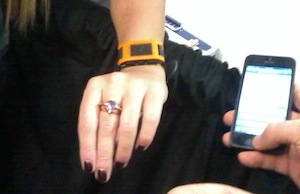
It’s not a smart watch unless it looks smart.
Microsoft is the latest company to get into the smart watch business, or so the latest rumors say. It could be a way to give Windows a competitive boost in the mobile OS market, if Microsoft can integrate it into the ecosystem in an interesting way.
The hot smart watch at CES in January was the Pebble. It links to a smart phone via Bluetooth, allowing users see messages and alerts or control phone functions. Other manufacturers, such as Casio, were showing watches that did similar things although on a less ambitious scale.
Wearable tech is slowly entering the marketplace. That’s one of the potential benefits of the flex screen Samsung demoed at CES – it can put a larger, but less intrusive, screen on your wrist. Google Glass and other head-mounted displays and cameras could do the same thing, if the product is attractive enough. People already wear glasses and wristwatches so adding functionality to those devices is easy so long as the form factor doesn’t change.
Ear buds and Bluetooth earpieces are also ubiquitous these days, which tells you people will add tech to their ensembles if it truly enhances their lives. Earbuds took off with the Walkman thirty years ago as a way to listen to tunes without bulky headphones. Bluetooth earpieces let people talk on their mobile phones whenever they want, without tying up their hands or getting caught up in cords. I doubt, though, that the market for Bluetooth earpieces would have taken off as quickly as it did without the help of hands-free requirements for drivers.
The best way to introduce a new product (or service) into the market is to make it just like an existing one, only better. Adding convenient functionality to a wrist watch is a no brainer in that regard. But the operative word is convenient: it has to blend seamlessly into lifestyle and fashion choices, not dictate them.
